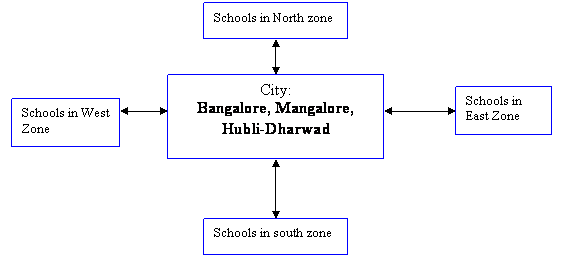
Methods/Stratergy |
• Initially organise intense workshops and training programmes to provide hands on training to high school teachers and students
• Devise field-based surveys and sampling procedures to be carried out by the high school students overlooked by the high school teachers on various themes under environmental education (like ecological, socio-economic, natural resources, etc.)
• Create mechanism to collate and assimilate relevant data collected from the field surveys and sampling.
• Use of Simputers (hand held computers) for data collection and analysis.
• In the process, students get sensitised with various issues concerning their neighbourhood ranging from ecological to socio-economic and natural resources
• Further, create mechanisms to spread the message amongst the students to various strata of the society
• Disseminate the collected environmental information through an open-source content management system (http://drupal.org) or Wiki engine making it accessible to everyone with add on features like
• Loading of data and analysis
• Visualistaion of analysed data
• Query based generation of scenario's
Web based spatial decision support system aid the decision makers in visualising the health of natural resources at a local level.
• Ideally state education department and the local body need to support this activity both in principle and material. This programme would generate ecological and environmental quality data at a regional level, which helps the local administration in the management of natural resources. Involvement of schools (every year) helps in getting the data updated.
• Principle – refers to making it mandatory for all high schools and making the activity attractive to teachers by offering some incentives for those teachers involved in this activity by the state education department
• Material – refers to providing logistic support to the experts for training, any support and cost to be incurred by students for field surveys and sampling by the local body, cost of website, etc. to be borne by the local body
Stage I: Ecological & Environmental Monitoring in Peri Urban and Rural schools
